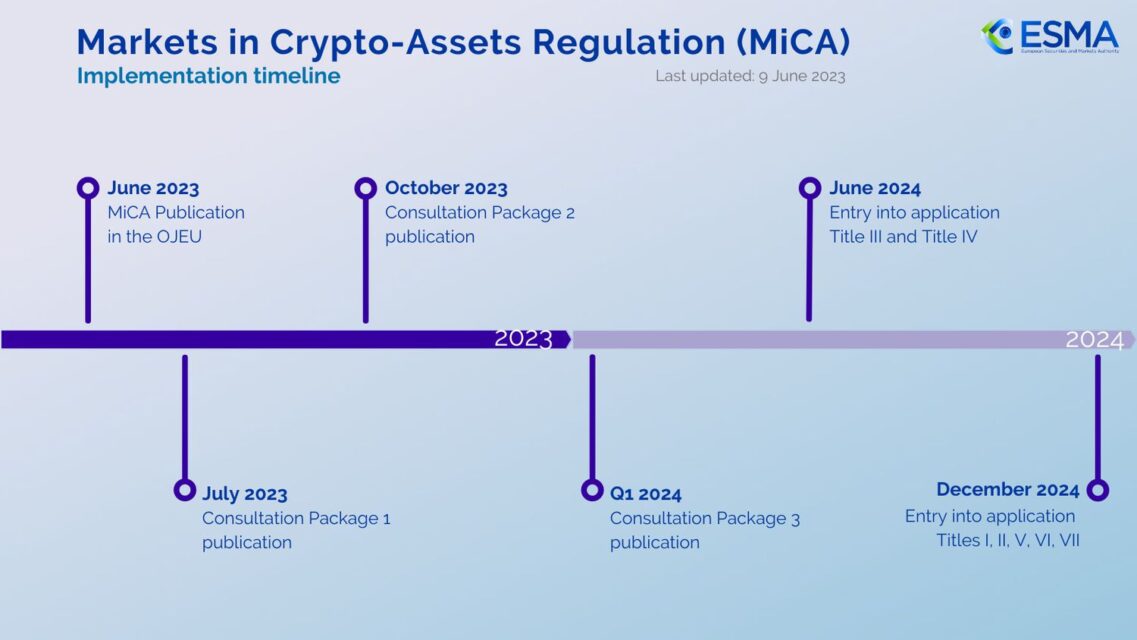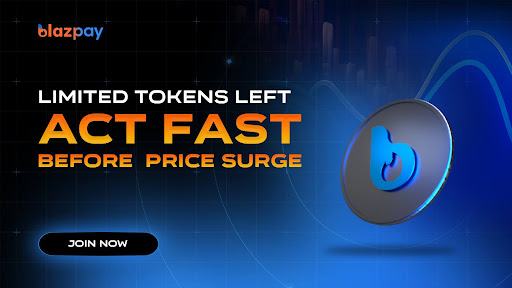Blockchain
Crypto Regulation: SEC Rules & Exchange Battles

The evolving landscape of crypto regulation, particularly the SEC’s recent interactions with major crypto exchanges, signals a pivotal moment for compliance and legal frameworks.
Understanding the Impact of SEC Regulations on Crypto Exchanges
In 2024, the SEC is pushing forward with a rigorous enforcement agenda aimed at crypto exchanges, emphasizing compliance with US securities laws.
This proactive stance includes significant actions against well-known platforms, signaling a pivotal period for the crypto industry’s regulatory landscape.
Further in the article, we will examine the SEC’s intensified scrutiny and its implications for crypto exchanges, investors, and the broader market.
Legal Challenges and Court Battles
Legal disputes between major cryptocurrency platforms and the SEC are defining moments in the crypto industry’s regulatory framework. These battles test the SEC’s authority and shape future governance over digital assets.
Major Cases and Legal Arguments
The SEC has initiated high-profile cases against leading crypto exchanges and platforms, asserting that many digital assets qualify as securities under US law.
Notable cases include actions against Coinbase and Binance, where the SEC argues these platforms operated without proper registrations, dealing in assets that should be classified as securities.
These cases hinge on whether specific tokens sold on these platforms are “investment contracts” and should be regulated as securities.
The legal outcomes could significantly influence how crypto assets are marketed, sold, and managed in the US.
Implications for Crypto Exchanges and Investors
The resolution of these legal challenges carries substantial implications for the operational practices of crypto exchanges.
For investors, the outcomes will likely affect the kinds of assets available on platforms and the level of regulatory protection they can expect when investing in crypto assets.
For crypto exchanges, a ruling against them could mean reevaluating their business models, requiring significant changes to ensure compliance with securities laws.
It may entail stricter AML (anti-money laundering) and KYC (know your customer) policies and fewer tradeable cryptocurrency assets.
Strategic Responses by Crypto Companies
In response to these legal pressures, crypto companies like Coinbase have articulated their stance, challenging the SEC’s claims and arguing that not all digital assets are securities.
This Exchange, for instance, has pushed back against the SEC’s broad application of securities laws, which they argue stifles innovation and harms the US position in the global crypto market.
These companies are also lobbying for more precise rules delineating which digital assets are securities and which are not, advocating for legislation supporting innovation while providing adequate consumer protections.
Future Legal and Crypto Regulation Landscape
The ongoing court cases are likely to prompt legislative changes, with potential new laws that could redefine the regulatory landscape for cryptocurrencies.
The outcomes could lead to more defined roles and responsibilities for regulatory bodies like the SEC and CFTC (Commodity Futures Trading Commission) and more precise guidelines for crypto businesses.
The legal battles and resolutions are poised to establish precedents that will influence future SEC actions and, potentially, the broader legislative environment for the crypto industry.
These developments are critical, as they will help shape the balance between regulatory oversight and innovation within the burgeoning crypto market.
The intricate dynamics of these legal battles reveal the complex interplay between regulation and innovation in the crypto industry.
The outcomes of these cases will not only affect the parties involved but could also set the stage for the future regulatory framework governing digital assets.
Compliance and Operational Adjustments
The intensifying regulatory landscape demands crypto exchanges adapt their operations to align with new compliance requirements.
Adapting to New Regulatory Requirements
Crypto exchanges are increasingly pressured to conform to evolving SEC regulations, which dictate a tighter control environment around trading digital assets considered securities.
Adjustments include enhancing transparency, improving reporting standards, and enforcing stricter due diligence on listings to avoid the inclusion of potential securities without proper oversight.
Technological Solutions for Compliance
Many crypto platforms are turning to advanced technological solutions to tackle the challenges posed by these stringent regulations.
One way to achieve this is by installing advanced compliance software that automatically monitors and reports on transactions that are considered securities.
These systems are designed to flag transactions requiring additional scrutiny or specific compliance procedures, thereby reducing the risk of regulatory breaches.
The SEC acknowledges that it must change to keep up with the markets it oversees:
The SEC must also continue to enhance its expertise in, and devote increased resources to, product markets beyond equities — including crypto assets, derivatives, and fixed income — and maintain a nimble and flexible approach to address market changes expeditiously.
Best Practices for Crypto Exchanges
Best practices in this new regulatory era involve:
- Proactive engagement with regulatory bodies, adopting robust governance frameworks, and continuous education of users about regulatory changes and their impact on trading activities.
- Establish clear communication with crypto exchanges, which are advised to channel with investors, providing regular updates on regulatory developments and how they affect the services offered.
These adjustments are crucial for crypto exchanges to remain compliant and competitive in a rigorous enforcement and oversight landscape.
In this way, the exchange’s dedication to security and transparency is reinforced while helping comply with regulatory requirements and fostering trust with users and investors.
Global Perspectives on Crypto Regulation
As the SEC ramps up its regulatory framework, comparing these developments with global regulatory trends in the crypto sector is insightful.
Comparison with Regulations in Other Countries
Countries worldwide are at various stages of implementing their cryptocurrency regulatory frameworks.
For instance, the Markets in Crypto-Assets (MiCA) framework is a recent development by the European Union that attempts to standardize legislation for cryptocurrency assets among its member states.

In the US, however, there has been more partisanship and fragmentation of regulatory certainty. (CoinDesk).
In Asia, nations like Japan and South Korea have established more stringent regulatory environments, focusing on investor protection and anti-money laundering measures while maintaining a generally supportive stance towards technological innovation in the crypto space.
International Cooperation in Crypto Regulation
There’s a growing trend towards international cooperation among regulatory bodies to tackle the global nature of the cryptocurrency market.
Forums like the G20 increasingly focus on synchronizing regulatory approaches to cryptocurrencies, aiming to combat financial crimes and ensure a stable international monetary system without stifling innovation.
Future Trends in Global Crypto Policies
The global perspective on cryptocurrency regulation is trending towards more stringent frameworks that require greater transparency and compliance from all market participants.
However, there’s also a significant focus on ensuring these regulations do not hinder the crypto industry’s growth.
Future trends may include more standardized international regulations and possibly global frameworks that facilitate easier cross-border operations of crypto businesses.
These contrasts and patterns draw attention to the various methods and intricacies involved in cryptocurrency regulation across the globe.
Such insights are critical for stakeholders in the cryptocurrency market to anticipate changes and adjust their strategies accordingly.
Expert Opinions and Predictions on Crypto Regulation
From business executives to legal specialists, we will now compile their perspectives on the evolution of cryptocurrency laws, including predictions about future modifications and their possible effects on the market.
Views from Industry Leaders

Prominent figures in the crypto industry have expressed mixed feelings about the SEC’s current regulatory approach.
For example, some executives argue that the SEC’s enforcement-first strategy might hinder innovation and drive crypto businesses offshore. They suggest a more balanced approach, encouraging the SEC to provide clear guidelines that support innovation while ensuring market integrity.
Coinbase’s CEO recently highlighted the challenges of navigating unclear and sometimes contradictory regulations, calling for a regulatory framework that is both clear and fair. This sentiment is echoed by others who fear that without regulatory clarity, the US risks falling behind other nations more openly embracing the crypto economy.
Legal Expert Insights on Cryptocurrency Regulatory Trends
Legal experts closely monitor the evolution of crypto regulations, noting that the SEC’s aggressive stance could set important precedents for other regulators globally.
For instance, experts from Norton Rose Fulbright predict that, regardless of the aggressive approach, the necessity for a balanced regulatory regime that accommodates the unique aspects of cryptocurrencies is inevitable.
A prominent attorney specializing in blockchain technology pointed out, “The regulatory landscape needs to evolve with the technology, not against it.
Regulatory agencies should work with industry leaders to craft laws that protect consumers without stifling innovation”.
Predictive Analysis of Upcoming Crypto Regulatory Changes
Predictions for future regulatory changes primarily focus on the potential for more definitive actions from legislative bodies.
Experts predict that significant legislative efforts will be made in the coming years to create more concrete frameworks for cryptocurrency.
For instance, some predict that Congress might step in to provide the necessary clarity that the SEC has been slow to offer, potentially through new legislation that explicitly addresses the classification of digital assets and their regulatory requirements.
These expert opinions and predictions shed light on the ongoing debate and the possible directions for crypto regulation.
As the industry evolves, these insights will be crucial for stakeholders to navigate the changing regulatory landscape effectively.
Managing Cryptocurrency Regulation in the Future
As we’ve explored throughout this article, the landscape of cryptocurrency regulation is undergoing significant transformations, particularly in the United States. The SEC’s intensified scrutiny and legal actions against major crypto platforms mark a critical juncture for the industry, raising questions about the future of digital asset classification and regulatory compliance.
Summary of Key Points:
- Increased Enforcement:
The SEC is stepping up its efforts to regulate the cryptocurrency space, emphasizing compliance and treating many digital assets as securities, leading to high-profile legal challenges testing the limits of the SEC’s regulatory reach. - Legal and Operational Challenges:
Crypto exchanges and other platforms face significant legal and operational hurdles. The outcomes of ongoing legal battles could dictate operational adjustments and compliance strategies for years. - Global Regulatory Environment:
Comparison with other jurisdictions reveals a varied approach to crypto regulation. While some countries offer more clarity and support for innovation, the US remains a complex, somewhat contentious arena for crypto regulation. - Expert Insights and Predictions:
Industry leaders and legal experts advocate for more precise, balanced regulations that support innovation while ensuring market integrity and investor protection. There is a consensus that legislative action is needed to clarify the regulatory framework for cryptocurrencies.
The future of crypto regulation is poised at a crossroads, with the potential for significant legislative and regulatory changes that could reshape the industry. Stakeholders must stay informed and adaptable, ready to navigate the evolving compliance landscape.
Blockchain
Binance Futures Introduces ZKP, GUA, IR Perpetual Contracts

Binance Futures has expanded its derivatives suite once again, announcing the launch of USDS-margined perpetual contracts for ZKP, GUA, and IR. The new listings went live on December 21, 2025, at 10:00 UTC, offering traders access to high-leverage instruments in an increasingly fast-moving crypto derivatives market.
The exchange’s newest contracts—ZKPUSDT, GUAUSDT, and IRUSDT—allow users to take positions with leverage of up to 40x for ZKP and 20x for both GUA and IR, introducing broader strategic options for traders navigating shifting market conditions.
Expanding Derivatives Access With High Leverage
Binance’s introduction of ZKP, GUA, and IR perpetual contracts aligns with its ongoing push to diversify available trading instruments and deepen participation in niche and emerging assets. The USDS-margined structure provides a more risk-managed alternative for traders seeking precision in volatile markets.
By offering up to 40x leverage on ZKPUSDT, Binance is positioning the asset for increased speculation and potential liquidity inflows. Meanwhile, GUAUSDT and IRUSDT, capped at 20x leverage, still provide substantial room for derivatives-based trading without exposing users to extreme risk levels seen in higher-leverage products.
Although market leaders have yet to issue statements regarding Binance’s newest listings, analysts note that the exchange’s aggressive derivatives expansion is consistent with its broader strategic goals. Each new perpetual contract typically triggers shifts in trading volume, hedging behavior, and liquidity distribution across spot and futures markets.
A Strategic Pattern Emerges
Binance’s latest move follows its earlier introduction of the BOBUSDT perpetual contract with 20x leverage—hinting at a clear pattern of expanding leverage-based offerings across mid-cap and emerging crypto assets. The strategy appears designed to capture both speculative interest and advanced trading flow during a period of increased market volatility.
Among the newly listed assets, zkPass (ZKP) has shown notable price movement. According to recent data, ZKP trades near $0.11 with a market capitalization of $22.68 million. The token surged 12.84% in the past 24 hours, though long-term performance remains weak, declining 52.88% over extended periods. This volatility makes ZKP a prime candidate for derivatives trading, where leverage can amplify both opportunities and risks.
Broader Market Implications
The addition of these perpetual contracts is likely to influence short-term liquidity profiles for ZKP, GUA, and IR. Perpetuals often act as catalysts for increased market activity, attracting arbitrageurs, leverage-based traders, and algorithmic strategies. As liquidity deepens on Binance Futures, traders may use these instruments to hedge existing positions or speculate on short-term moves, especially amid a highly reactive market environment.
While official commentary remains limited, the introduction underscores Binance’s commitment to maintaining dominance in the derivatives sector—an area that consistently attracts higher volumes than traditional spot trading.
With leverage, USDS-margined efficiency, and newly emerging assets at the forefront, the latest listings provide traders with additional tools—but also reinforce the need for caution in a landscape where volatility remains the norm.
Blockchain
Bitcoin and BNB Analysis: Blazpay Phase 5 Launches as Investors Hunt for the Top Crypto Coins to Buy

The crypto market continues to evolve with investors seeking high-potential tokens and utility-driven platforms. Among the best presale crypto opportunities, Blazpay stands out in Phase 5, attracting attention as one of the most promising AI crypto coins. Alongside established cryptocurrencies like Bitcoin and BNB, the presale offers an early entry point with asymmetric upside potential, making it a key focus for anyone evaluating the next crypto coins to buy
Blazpay Presale Phase 5 – The Smart Move for Crypto Investors
Blazpay has officially started Phase 5, with the price currently set at $0.0135 and scheduled to increase to $0.0135 after this phase closes. So far, 236M of the 249.04M BLAZ tokens have been sold, with $2.04M already raised. With AI-enhanced utilities, multichain support, and gamified services, Blazpay positions itself as a leading presale token among the best crypto presale platform options today.

Gamified Rewards and Perpetual Trading Benefits
Blazpay’s ecosystem combines gamified engagement with perpetual trading options. Investors are incentivized to complete milestones, participate in AI-driven tasks, and maintain long-term activity within the platform. The integrated AI provides automated trading suggestions, while multichain connectivity ensures fast, low-fee transactions across networks, making Blazpay a unique AI crypto coin presale with tangible utility.
Blazpay Referral Program – Rewarding Early Advocates
The Blazpay referral system allows investors to earn rewards whenever their referrals participate in the presale. This creates a compounding incentive for early adopters to expand their network and increase their token allocation, especially valuable during Phase 5, where the price is set to rise shortly.
Blazpay Price Prediction – Growth Potential in 2025
Industry analysts suggest that Blazpay’s Phase 5 presale positions the token for potential substantial gains post-launch. With AI-driven utilities, gamified rewards, and growing investor demand, projections suggest Blazpay could achieve significant milestones relative to established cryptocurrencies. Early-phase investors are particularly well-positioned to capitalize on future price movements.
Blazpay $2,000 Strategy – Early Entry Advantage
A $2,000 purchase during Phase 5 at $0.0135 secures roughly 170,213 BLAZ tokens. If the token reaches $0.05, the position grows to $8,511. At $0.10, it rises to $17,021. Should Blazpay hit $0.25, the investment could be worth $42,553. This demonstrates the asymmetric upside for early participants, making Phase 5 a key entry window.
How to Buy BLAZ
To participate before the Phase 4 supply sells out:
- Visit the official Blazpay presale page
- Connect your wallet (MetaMask, Trust Wallet, Coinbase Wallet)
- Select your preferred currency (ETH, BNB, USDT, SOL)
- Enter the amount you want to purchase
- Confirm the transaction and claim tokens after launch
Bitcoin (BTC) – Leading Crypto Coin to Buy for Institutional Exposure
Bitcoin (BTC) is trading at approximately $87,822 USD as of December 17, 2025, up 1.63% from the previous day. The digital asset continues to dominate the market, offering investors exposure to a proven store of value and hedge against inflation. Despite being 17% below last year’s highs, BTC shows strong institutional interest, with long-term holder supply at an 8-month low of 14.34 million BTC. With potential ETF inflows and ongoing adoption, Bitcoin remains one of the top crypto coins to buy for those seeking stability with growth potential in the digital asset space.

BNB – Established Blockchain Token Among Top Crypto Coins to Buy
BNB is holding steady around $857 USD, supported by $2.6 billion in 24-hour trading volume. The BNB Chain ecosystem continues expanding with initiatives like a new stablecoin targeting institutional usage, strengthening its utility in decentralized finance and trading platforms. While short-term fluctuations occur, BNB’s consistent network adoption and high liquidity make it a strong candidate among crypto coins to buy for investors looking to combine platform utility with long-term potential.
Conclusion
Blazpay’s Phase 5 presale offers investors the chance to access one of the most promising AI crypto coins early, with multichain utility and gamified rewards driving strong adoption. Complementing BTC’s store-of-value role and BNB’s utility-focused growth, this trio represents a strategic combination of new and established crypto assets. For investors seeking asymmetric potential alongside reliable blockchain leaders, Blazpay, Bitcoin, and BNB remain top crypto coins to buy in 2025.

Join the Blazpay Community
Website: www.blazpay.com
Twitter: @blazpaylabs
Telegram: t.me/blazpay
FAQs
Q1. What makes Blazpay stand out among new crypto coins?
Its AI-enhanced automation, gamified services, and cross-chain capabilities differentiate it from traditional presale tokens.
Q2. How can I participate in Blazpay Phase 5?
Investors can buy BLAZ tokens via the official presale platform using the integrated steps for wallet connection and token purchase.
Q3. Why include Bitcoin and BNB in a presale portfolio?
BTC offers long-term stability, while BNB provides utility exposure in a major ecosystem, complementing early-stage tokens like Blazpay.
Q4. What is the risk/reward profile of Blazpay?
High potential upside due to Phase 5 presale pricing and AI-powered utility, balanced against typical early-stage crypto volatility.
Q5. How long until the next Blazpay price increase?
Phase 5 has just started, and the price will rise from $0.0135 to $0.0155 after completion.
Blockchain
DinoSol Debuts as a Meme-Driven Solana Token With Community-First Positioning

DinoSol (DINOSOL), a new entrant in the Solana meme-coin ecosystem, has launched with a strong emphasis on branding, simplicity, and early-stage community engagement. Built on Solana and centered around a playful, cartoon-styled dinosaur mascot, DinoSol joins the growing wave of culture-driven memecoins that leverage viral identity over utility-heavy roadmaps.
While still in its early development phase, DinoSol positions itself as a community-focused token aiming to expand through social momentum, low-cost Solana transactions, and a recognizable visual identity.
A Meme Coin Built on Solana’s High-Speed Infrastructure
DinoSol operates on the Solana blockchain, benefitting from fast, inexpensive transactions — a critical advantage for meme coin communities that thrive on rapid micro-trading, gifting, and community campaigns.
The project highlights accessibility as a core pillar: lightweight token mechanics, easy integration with Solana wallets, and a low barrier to entry for new users entering the meme token space.
Branding, Lore, and Community Identity
Unlike utility-first projects, DinoSol leans heavily on meme culture and its distinctive mascot. The design reflects exaggerated cartoon expressions, bright color themes, and a comedic aesthetic intended to resonate with viral crypto culture.
The branding suggests a lighthearted, entertainment-driven narrative — a key trait of recent memecoin successes.
DinoSol emphasizes community participation across its homepage and social channels, positioning the token as a collective movement rather than a structured technical product.
Tokenomics and Supply
Based on available public details, the token operates with a fixed supply model, a common approach in Solana meme tokens designed to reinforce scarcity and encourage early participation.
No complex staking, lockups, or reward mechanisms are described — aligning with its simplified meme-first positioning.
The focus remains on transparent supply, easy ownership, and frictionless trading.
Emerging Market Presence
As a newly listed asset on CoinMarketCap, DinoSol joins the expanding roster of Solana-based memecoins that have gained traction throughout 2025. While early trading metrics are still forming, interest has grown due to:
- Rapid community expansion
- Strong memeable branding
- Increasing visibility across Solana meme-fi culture
DINOSOL’s growth trajectory will depend largely on social momentum and how quickly the project can sustain community engagement.
Outlook
DinoSol is entering a highly active segment of the crypto market, where cultural resonance and simplicity often outweigh utility at launch. If meme sentiment on Solana continues to strengthen, DinoSol could benefit from the broader trend toward culture-and-community driven tokens.
For now, the project remains early-stage but well-positioned within Solana’s thriving meme ecosystem.
-

 Crypto3 years ago
Crypto3 years agoCardalonia Aiming To Become The Biggest Metaverse Project On Cardano
-

 Press Release5 years ago
Press Release5 years agoP2P2C BREAKTHROUGH CREATES A CONNECTION BETWEEN ETM TOKEN AND THE SUPER PROFITABLE MARKET
-

 Blockchain5 years ago
Blockchain5 years agoWOM Protocol partners with CoinPayments, the world’s largest cryptocurrency payments processor
-

 Press Release5 years ago
Press Release5 years agoETHERSMART DEVELOPER’S VISION MADE FINTECH COMPANY BECOME DUBAI’S TOP DIGITAL BANK
-

 Press Release5 years ago
Press Release5 years agoProject Quantum – Decentralised AAA Gaming
-

 Blockchain5 years ago
Blockchain5 years agoWOM Protocol Recommended by Premier Crypto Analyst as only full featured project for August
-

 Press Release5 years ago
Press Release5 years agoETHERSMART DEVELOPER’S VISION MADE FINTECH COMPANY BECOME DUBAI’S TOP DIGITAL BANK
-

 Blockchain6 years ago
Blockchain6 years ago1.5 Times More Bitcoin is purchased by Grayscale Than Daily Mined Coins






